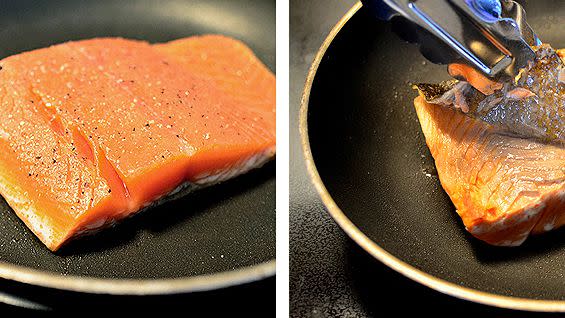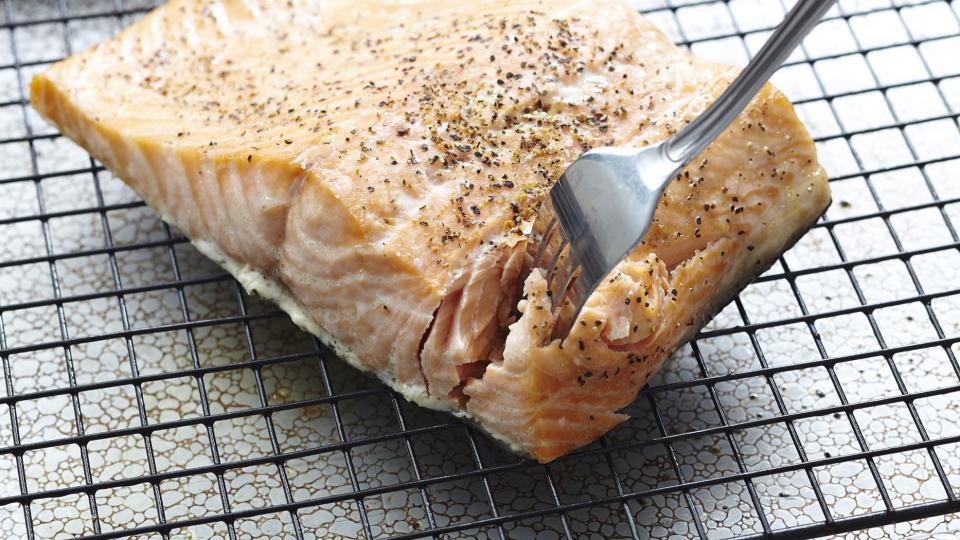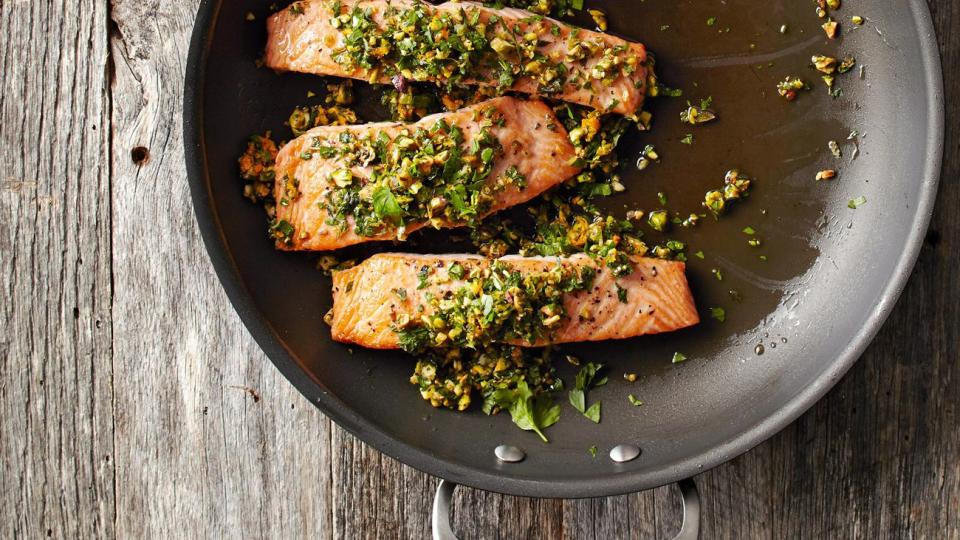How to Cook Salmon On the Stove for a Heart-Healthy Meal in Minutes

Salmon is a delicious, healthy option for all sorts of meal plans and dietary needs. The protein-rich pink fish is full omega-3 fatty acids, which could help reduce the risk of cardiovascular disease and help alleviate arthritis symptoms. Bonus: Those good-for-you fats can also help yield healthier skin. And while cooking salmon in the oven is a popular choice to infuse the fish with flavor, pan-searing salmon in a skillet achieves equally delicious results. Use our tips to learn the best way to make pan-fried salmon with ease. We also include our Test Kitchen's easy method of removing the skin.
How to Cook Salmon on the Stove
Before you start making sautéed salmon fillets, it's important to understand the difference between the varieties of salmon available at your grocery store. Most varieties of wild salmon are available fresh from May to October and frozen year-round. Wild salmon typically comes in Pacific Coast varieties such as coho (silver), sockeye (red), Chinook (king), pink, and chum. Atlantic salmon is usually farmed and more readily available for a lower price.
Step 1: Choose and Season Your Salmon
Start by choosing a salmon fillet. For cooking salmon in a skillet, 4-ounce fillets generally work best because they won't overcrowd your pan. Pat the salmon dry and season with salt and pepper or desired seasonings.

Courtesy of Kristin Porter
Step 2: Start with the Salmon Skin-Side Down
Place the salmon skin-side down in a 12-inch skillet over medium-high heat with 1 Tbsp. butter and 1 Tbsp. cooking oil. Cook until you can see the salmon beginning to change color up the side. Flip the salmon and let it cook for about half the time it cooked on the first side. While the salmon is cooking on the second side, use tongs to gently peel back the skin. The skin should be crisp and peel off in one strip, which you can discard.
How Long to Cook Salmon in a Skillet
Our Test Kitchen suggests cooking salmon 4 to 6 minutes per ½-inch thickness.
Step 3: Add a Glaze or Sauce
Add a glaze, sauce, or even just a squeeze of fresh lemon juice to give the salmon fillet more flavor. We love this maple-bourbon glaze, but feel free to be creative and use any glaze or sauce you want.

Karla Conrad
Step 4: Check Salmon for Doneness
After adding a sauce, flip the salmon one more time. To check for doneness, insert a fork and gently twist. The salmon is done as soon as it begins to flake and becomes opaque. You can also insert an instant-read thermometer into the thickest part of the fillet. If the temperature reaches 145°F, your salmon is done. If the salmon flakes easily when the fork is inserted and the internal temperature is high enough, remove it from the skillet and transfer it to your plate.

Jacob Fox
Step 5: Dig In!
For an easy and healthy meal, serve the pan-seared salmon with a helping of veggies and a starch, such as brown rice.
You don't have to limit yourself to pan-seared salmon—there are plenty of salmon recipes using any method of cooking. Try grilled salmon for an easy and delicious summer meal. Whether you grill salmon fillets on a cedar plank, in a basket, on foil, or directly on the grill, we have tips to help you achieve that mouthwatering smoky flavor. It takes less than 10 minutes in the oven to serve up a flaky fish dinner that's much better than any freezer meal. You can even cut down on dishes by making oven-baked salmon in a foil pack.

